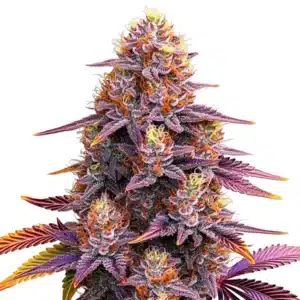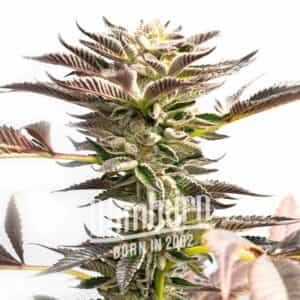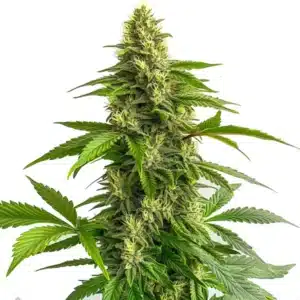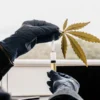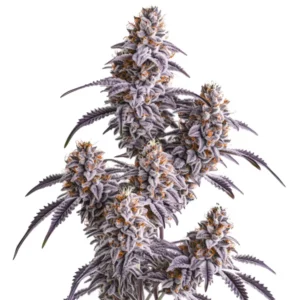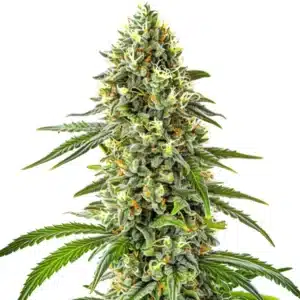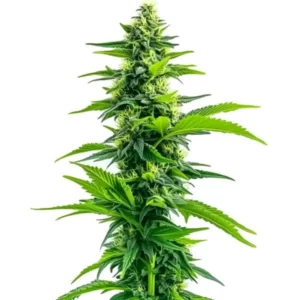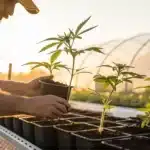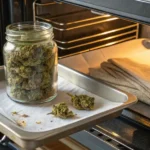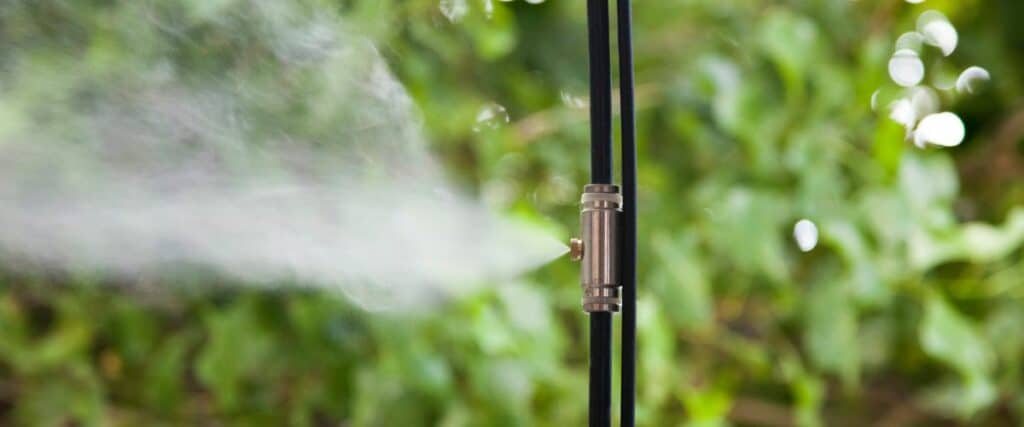
Choosing the Best Grow Tent Humidifier
Humidity management is crucial in cannabis cultivation to ensure optimal growth and yield. Adjusting humidity levels according to the plant’s developmental stages is essential for maximizing production. For instance, younger plants have different moisture requirements compared to those in full bloom. To achieve this balance, it’s recommended to use a grow tent humidifier along with a humidity controller throughout the crop cycle. Generally, smaller plants need higher humidity levels, while mature plants in flowering require less relative humidity.
Monitoring is key, as excessive humidity can lead to mold. By the other side, low humidity can attract spider mites. These pests pose significant threats to cannabis plants, although other pests and fungi may also thrive in improper humidity conditions. For these reasons, it is sometimes necessary to use a grow tent humidifier when growing indoors since you will also enhance bud production.
Recommended Strains
The Good Humidity Levels for Cannabis Plants
There isn’t a universal humidity level that suits every stage of cannabis growth from seed to harvest. The ideal relative humidity (RH) varies based on the growth stage of your plants. Seedlings and clones benefit from higher humidity levels, whereas more mature plants, especially nearing harvest, thrive with reduced humidity to prevent mold and safeguard your yield.
- Seedlings (50–60% RH): Seedlings and newly propagated plants rely on absorbing water through their leaves due to their underdeveloped root systems. Therefore, maintain a humidity level of 50–60% RH at the beginning of your growth cycle.
- Vegetative Stage (40–60% RH): As plants transition from seedlings to full vegetative growth, slightly lower humidity levels are suitable. Aim for around 50% RH throughout the vegetative phase.
- Flowering Stage (40–50% RH): During flowering, it’s crucial to decrease humidity further to around 40–50% RH. This adjustment helps prevent moisture retention in buds, which can otherwise lead to mold formation, particularly in the initial weeks of bloom.
- Late Flowering Stage (30–40% RH): In the late flowering phase, maintaining optimal humidity becomes critical. With buds becoming more susceptible to mold, reduce RH levels to 30–40% to mitigate this risk.
- Clones (70–80% RH): Clones, lacking established roots, depend on absorbing water through their foliage. Maintain a higher humidity of 70–80% RH for clones, typically by using a humidity dome to support their initial growth.
By adjusting humidity levels according to the specific growth stages of your cannabis plants, you can optimize their health and minimize the risk of mold affecting your harvest.
Promos & Deals
Benefits of Using a Grow Tent Humidifier
Using a grow tent humidifier in indoor cultivation can bring several significant benefits to the growth and health of plants. Here are the points requested:
Increased germination rates
Maintaining proper humidity levels throughout the plant’s lifecycle promotes higher germination rates. Seeds require an optimal environment to initiate germination. A grow tent humidifier ensures the environment is sufficiently moist for seeds to germinate quickly and evenly, thereby increasing initial crop success.
Better yields
A controlled environment with the help of a humidifier allows plants to grow healthier and more vigorously. This directly translates to better yields during the production phase. Well-hydrated plants, free from moisture stress, can develop stronger structures and consequently produce more abundant and higher-quality harvests.

Better protection from heat and cold
Appropriate humidity helps plants withstand temperature fluctuations better. In indoor climates, where conditions can be less stable, a grow tent humidifier maintains a constant level of relative humidity, helping buffer against the negative effects of extreme heat or intense cold. This is particularly crucial during delicate growth phases such as flowering and fruiting.
Lower risk of disease
Plants growing in dry environments are more susceptible to fungal and bacterial diseases. A grow tent humidifier controls the air’s relative humidity, creating a less favorable environment for harmful pathogens to proliferate. Reducing disease risk means less need for chemical treatments or fungicides, benefiting plant health and crop sustainability.
Lower energy costs as less cooling is required
Maintaining proper relative humidity levels with a humidifier can help reduce energy costs associated with cooling the environment. A more humid environment naturally feels cooler to both plants and growers, potentially reducing the frequency or intensity of cooling systems. This leads to more energy-efficient and cost-effective operation.
Prevent Root Rot
Humidifiers are crucial in preventing the dreaded root rot, which occurs due to inadequate water and oxygen levels, leading plants to appear unhealthy and wilted. Both overwatering and underwatering contribute to root rot, and fluctuating humidity levels exacerbate this risk. Swift action is essential as root rot can spread throughout your entire crop. By using a good humidification system to manage humidity levels, you can effectively prevent root rot and avoid significant financial losses.
Reduce Mold Risk
Molds like Aspergillus and Penicillium pose serious threats to both plants and humans. Similar to root rot, mold can spread among cannabis plants in your indoor facility. Effective control of indoor humidity and vapor pressure deficit (VPD) can prevent your plants from becoming susceptible to mold growth. This approach not only safeguards your crop but also protects you and your team from inhaling harmful spores.
The Impact of Unregulated Humidity on Cannabis Cultivation
The variable humidity requirements of cannabis underscore the critical need for a meticulously controlled environment that consistently maintains optimal moisture levels throughout its growth cycle. This is why indoor growing facilities such as grow rooms and greenhouses are employed—to create a controlled climate that maximizes plant productivity, shielded from the unpredictable weather conditions outside.
However, the absence of a proper dehumidification system to manage these conditions can result in several detrimental effects on your plants, compromising their health, quality, and yield. One significant risk is white powdery mildew, a fungal infection that thrives in high-humidity settings. This condition can arise from stagnant water near cannabis plants, severely impacting their overall health and the quality of the buds they produce.
While early cannabis growth stages require elevated humidity levels, effective airflow from a dehumidifier can prevent issues like these from escalating and damaging your harvest.
Additionally, inadequate humidity levels can lead plants to excessively absorb nutrients through their roots, particularly in warmer conditions. While nutrient uptake is beneficial, excessive nutrient intake can cause issues such as yellowing or burnt tips on leaves—a condition known as nutrient burn. This can diminish leaf mass and vigor, hindering the plant’s ability to efficiently convert light into energy, which is crucial during the flowering phase of cannabis growth.
Ultimately, maintaining proper humidity levels tailored to the varying needs of cannabis throughout its growth phases is essential for promoting healthy and robust plant development, thereby optimizing the quality of your crop yield.
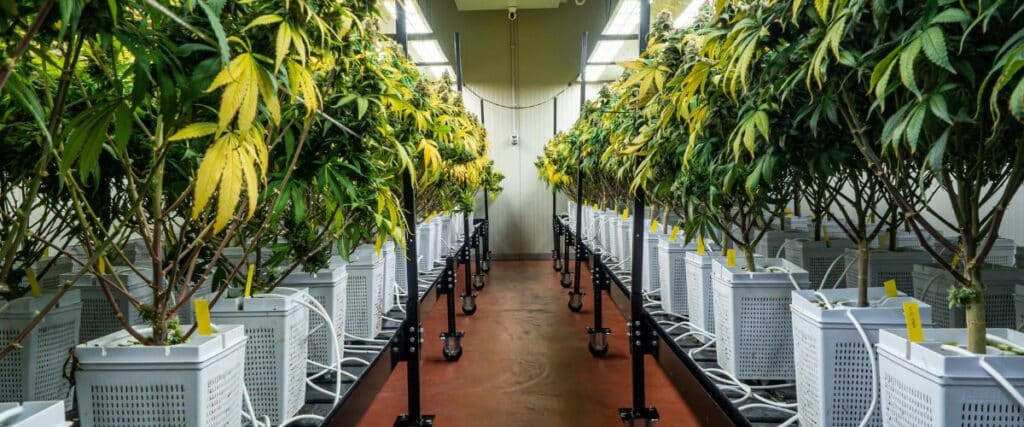
Type of Humidifiers
All humidifiers operate on the same principle but differ in functionality. Here’s an overview of five types:
Ultrasonic Humidifiers:
- Considered top-tier, offering both cool and warm mist options.
- Provides control over temperature and humidity levels.
- Notably quiet and easy to maintain.
Cool Mist Humidifiers:
- Dispenses room temperature mist, ideal for large spaces.
- Suitable for outdoor grows and greenhouses requiring cooling.
- Simple to operate and maintain.
Warm Mist Humidifiers:
- Commonly used; warms water before dispersal, raising room temperature.
- Quieter operation compared to cool mist variants.
- Economical choice.
Evaporative Humidifiers:
- Functions by passing air through a moist filter, maintaining room temperature.
- Does not leave mineral residue; effective against pathogens.
- Easy to use and maintain.
Air Washer Humidifiers:
- Acts as both humidifier and air filter, emitting cool mist.
- Suitable for large areas; operates quietly.
- Removes dust and pathogens from the air.
Each type of humidifier serves distinct purposes, from controlling humidity and temperature to filtering air and maintaining cleanliness.
How do you increase yields using a humidifier?
Photosynthesis Optimization: Photosynthesis is essential for plants to convert sunlight into energy. Proper humidity levels can optimize this process by ensuring that stomata (small pores on leaves responsible for gas exchange) do not close due to extreme dryness. By producing good photosynthesis, plants will develop optimally both in the vegetative and flowering phases. For this reason, maintaining good photosynthesis during flowering will help the crops to be larger and of better quality.
Better Yields: A controlled environment with the help of a humidifier allows plants to grow healthier and more vigorously. This directly translates into better yields during the production phase. Well-hydrated plants without stress due to lack of humidity can develop more robust structures and, consequently, produce more abundant and higher quality crops.
FAQs about Choosing Best Grow Tent Humidifier
What Are the Ideal Humidity Levels for Cannabis Growth Stages?
Cannabis plants require specific humidity levels at different growth stages. Seedlings thrive at 50–60% relative humidity (RH), vegetative stages prefer 40–60% RH, and flowering stages benefit from 40–50% RH. In late flowering, reducing humidity to 30–40% RH helps prevent mold. Clones need higher humidity, around 70–80% RH, to support root development.
How Does a Humidifier Benefit Indoor Cannabis Cultivation?
A humidifier maintains optimal moisture levels, enhancing seed germination rates and promoting healthier plant growth. Proper humidity control prevents issues like mold during flowering and supports clones by providing necessary moisture. Additionally, maintaining appropriate humidity reduces plant stress and the risk of diseases, leading to better yields.
What Are the Risks of Improper Humidity Levels in a Grow Tent?
Unregulated humidity can lead to mold growth, especially during the flowering stage. High humidity fosters fungal diseases, while low humidity can cause nutrient imbalances and stress, hindering plant development. Maintaining appropriate humidity levels is crucial to prevent these issues and ensure a healthy cannabis crop.



